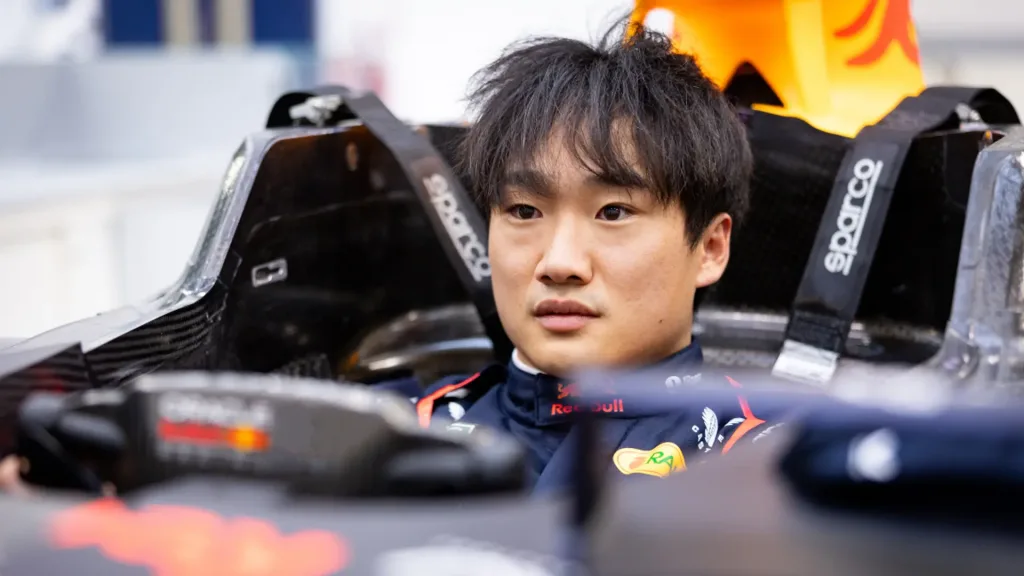Yuki Tsunoda, Red Bull Racing’s newest driver, has candidly shared the difficulties he’s faced in adapting to the team’s 2025 Formula 1 car, the RB21, as he prepares for the upcoming Miami Grand Prix. The Japanese driver, who was thrust into the high-pressure role of Max Verstappen’s teammate at his home race in Japan in March, described the process as “not easy” and one that “needs more time” to fully master.
Tsunoda’s transition to Red Bull came abruptly after just two races into the 2025 season, replacing Liam Lawson, who struggled to extract performance from the notoriously tricky RB21. Without prior testing with the team, Tsunoda was thrown into the deep end, debuting at Suzuka and facing a grueling triple-header of races in Japan, Bahrain, and Saudi Arabia. Despite the steep learning curve, the 24-year-old has shown flashes of potential, scoring his first points for Red Bull with a ninth-place finish in Bahrain and securing back-to-back Q3 appearances.
“The RB21 is a lot trickier than I expected,” Tsunoda admitted after his initial runs at Suzuka. However, with more mileage under his belt, he’s begun to unravel the car’s complexities. “It just needs more time to get used to it fully,” he said ahead of the Miami Grand Prix, pinpointing qualifying as a key area for improvement. Red Bull’s senior advisor, Helmut Marko, echoed this sentiment, noting that Tsunoda’s Q3 performances need refinement to meet the team’s expectations.
The RB21 has been a challenging machine for Red Bull in 2025, with both Lawson and four-time world champion Max Verstappen describing it as difficult to drive due to balance issues and discrepancies between the team’s wind tunnel data and on-track performance. Tsunoda highlighted the car’s narrow operating window, which Verstappen has mastered but proves elusive for others. “Max senses more things in the car than I do, like tyre temperature immediately out of the garage,” Tsunoda explained, marveling at his teammate’s adaptability.
One of Tsunoda’s key discoveries is that the RB21 can paradoxically be quicker when it’s not perfectly balanced, requiring a shift in his driving approach compared to his previous car, the VCARB 02, which he drove for four seasons with Racing Bulls. “Making the RB21 easier to drive does not necessarily make it faster,” he noted, a realization that has helped him unlock more lap time.
To aid his integration, Red Bull arranged a private test in the championship-winning RB19 at Silverstone last month, allowing Tsunoda to gain valuable mileage in a more relaxed setting. While the RB19 differs from the RB21, the test provided insights into the characteristics of a high-performing Red Bull car. The team also scheduled additional testing ahead of Miami to help Tsunoda better understand the RB21’s quirks.
Despite a mixed start—marked by a 12th-place finish in Japan, a first-lap crash in Saudi Arabia, and just two points from three races—Tsunoda’s technical feedback has impressed Red Bull. Team principal Christian Horner praised his experience as “highly beneficial” in developing the RB21, while Marko has guaranteed him the seat for the season, giving Tsunoda a rare window of stability in Red Bull’s historically impatient driver program.
However, the pressure remains immense. Tsunoda is tasked with not only adapting to a complex car but also performing alongside Verstappen, whose driving style demands a specific setup that others struggle to replicate. Former F1 team boss Guenther Steiner described Tsunoda’s role as a “test,” with young prospect Isack Hadjar waiting in the wings as a potential replacement.

